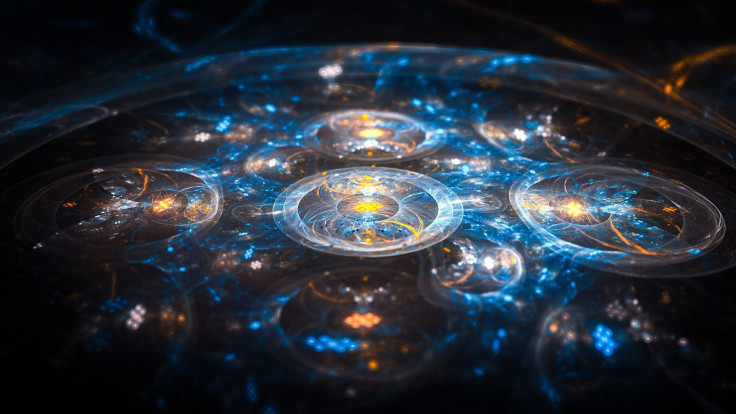4D World: Light Moving In Fourth Dimension Observed During Quantum Hall Experiment

We can only experience life in three spatial dimensions, but there could still be countless others out there, existing outside the range of our sensory perceptions. Scientists recently used a bit of a scientific trick to get a look into one of those extrasensory dimensions.
At the root of their discovery is something called the quantum Hall effect. It involves restricting material to a two-dimensional space and then passing an electric current through. When the material is super cold and the magnetic fields are strong, that interaction creates a voltage that jumps up in steps rather than rising in a continuous flow. The theory was that if humans could perceive a fourth dimension — a spatial one; not the dimension of time — we would see this same effect there as well.
That’s where the new experiments come in. The scientists created setups, which are described in the journal Nature, that would show them what could be occurring in the fourth spatial dimension without having to build some sort of inter-dimensional teleporter to take them there. They were relying on the fact that they could collect information from the fourth dimension without actually being able to step into it, as it exists and potentially affects others regardless of our own perceptions.
Two experiments used different methods in a two-dimensional space to simulate a four-dimensional one. In one setup, the scientists used lasers to create 2D pathways through glass and then sent lightwaves through. In another, they used crisscrossed laser beams to influence the motion of super cold atoms. With both of the systems, they were seemingly forcing the materials inside to move within another dimension, a simulated one.
The Swiss university ETH Zürich described the experiments as creating a “virtual dimension.”
Although they could not physically see that dimension they were building, the scientists observed the material sent through their experiments to find evidence of the fourth-dimensional quantum Hall effect.
“The end result … looks as though the system had been moving in an additional spatial dimension,” the university explained. “In this way one can, theoretically, turn a two-dimensional system into a four-dimensional one.”
The findings bring the theory about the quantum Hall effect occurring in a fourth dimension a bit into reality. Previously it “was more like science fiction,” researcher Oded Zilberberg said in the university statement. “Actually observing something like that in an experiment seemed impossible — after all, physical space only has three dimensions.”
Where the science goes from here remains to be seen.
“Right now, those experiments are still far from any useful application,” Zilberberg said, but they could be a stepping stone toward such an application.
The university gave the example of helping us to explore string theory, in which “higher spatial dimensions are ‘compactified’ in such a way that, at the end, our normal three-dimensional world emerges.” That could give us a better understanding of the universe we live in.
This report has been updated with corrections, and language that should have been attributed to Gizmodo has been deleted.
© Copyright IBTimes 2024. All rights reserved.



















